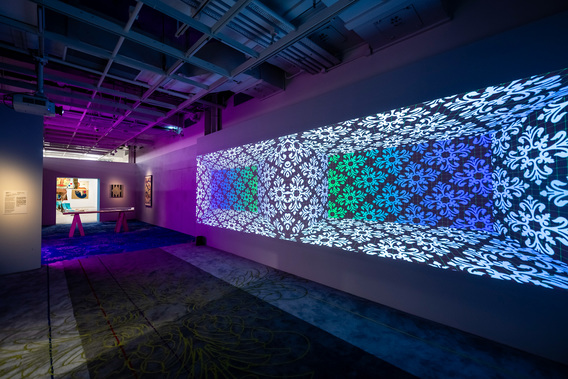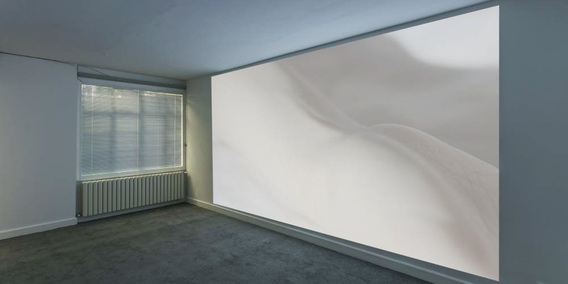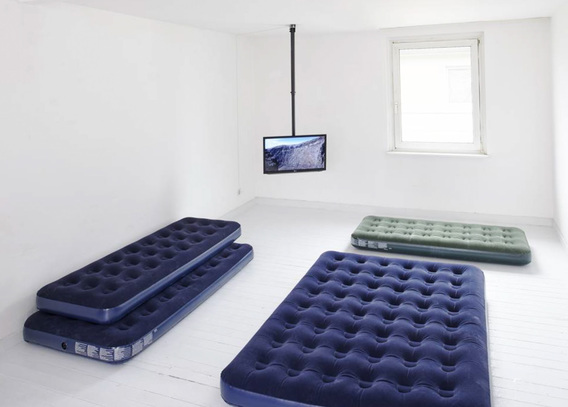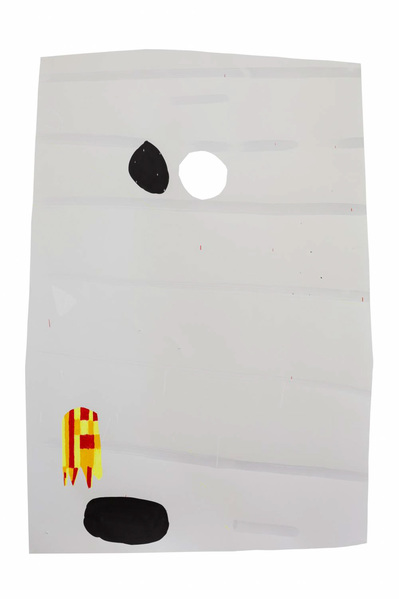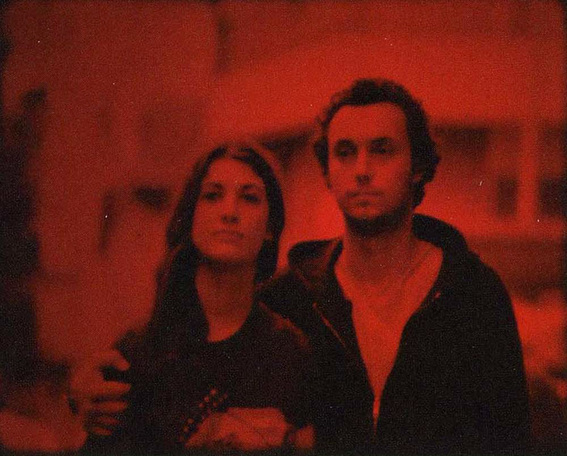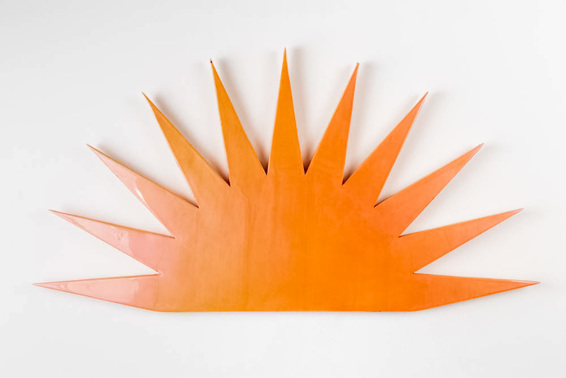
R
E
V N
E
X
T
For more than two decades, Basel’s Liste art fair has been the more casual, more hip alternative to the big fair at the Messeplatz, with younger galleries showing younger artists and drawing a younger crowd of visitors to the cozy premises of a former brewery. With public health concerns first compelling the fair to postpone until September and then to go digital, Liste is making its online debut as a platform called Showtime. More than living up to its reputation as a place where audiences can discover new artists, Liste has created a virtual forum that is as much about introducing the diverse practices of artists as it is about buying and selling. ArtAsiaPacific takes a look at some of the artists presented by more than 70 galleries at Liste Showtime through September 20.
Bi Rongrong
A Thousand Plateaus, Chengdu
Bi Rongrong’s installation and video projects are introspective and personal. Drawing inspiration from her life, they represent her artistic journey, development, culture, and personal taste. Bright lines, shapes, and patterns as seen in the Re-encode-Pattern XI-∞ (2020) series are characteristic of her aesthetic vision.
Srijon Chowdhury
Antoine Levi, Paris
Srijon Chowdhury incorporates a wide range of styles and influences for his oil paintings. Medieval Tapestry (2020), for example, portrays a unicorn in a field of flowers on a smartphone screen. Dark, moody, and rich in symbolism, Chowdhury’s canvases reconfigure elements of mythology and traditional culture for the modern world.
Mostafa Sarabi
Balice Hertling, Paris
In the surreal worlds depicted by Tehran-based painter Mostafa Sarabi, humans and animals co-exist, even becoming one another. There is a mystical undertone to many of these figures, like the perched owl with the bearded face of a man wearing a halo.
Feng Chen
Capsule Shanghai
Feng Chen is concerned with exploring the relationships between perception, reality, and humans. His immersive installation The Darker Side of Light: Convulsion (2017) combines video, sound, and automated movement from flickering window blinds, aiming to reconfigure viewers’ perceptions of body and space, man and machine.
Hoda Kashiha
Dastan’s Basement, Tehran
Multimedia artist Hoda Kashiha captures, dissects, and questions the intricacies of everyday life. Acrylic-on-canvas Night After Days (2020) explores the division between night and day in relation to human emotions through cartoon-like illustrations in bright blue and yellow, while Spotlight (2020) showcases both literal and painted overexposure.
Phung-Tien Phan
Drei, Cologne
Phung-Tien Phan plays with size, scale, and reinterpretations of Vietnamese culture with her sculptures. From the Volkswagen series (2020), Mary Kate creates a Buddhist altar-like space in the top shelf of a rolling cabinet while a dollhouse living room rests on the bottom shelf, mixing tradition with facets of contemporary living.
Jieun Lim
Ermes-Ermes, Vienna
Jieun Lim’s works explore intimacy, relationships, and personal turmoil. The installation series Dear and Dearest (2020) spotlights the small obstacles of daily life with a five-minute video accompanied by spoken prose muttered through air mattresses. Mirroring the eeriness of this work is a series of peculiar and theatrical photographs, such as Grandmother’s Tongue (2016).
Maha Maamoun
Gypsum, Cairo
Intervention lies at the core of Maha Maamoun’s practice. Through video work Dear Animal (2016), which narrates a tale of power and violence, and low-angled inkjet prints of prayers at public notary offices across Cairo in The Subduer (2017), she creates absurdity from normalcy and humor from solemnity.
Su Yu-Xin
MadeIn, Shanghai
Su Yu-Xin’s colorful impressionist oil and acrylic landscapes capture sensorial perceptions of the places. Stream Folds #6, Crescendo (2019), for example, is at once poetic and refracted; the tranquil river is depicted from different perspectives within the same canvas.
Sara Chang Yan
Madragoa, Lisbon
Sara Chang Yan’s minimalist works on paper play with scale and form. In Num Plano Qualitativo #17 (2020), a meter-tall paperboard drawn with a few colored pencil shapes, and Equação de Energia (2019), a ceramic sphere dangling from a single thread, she aims to reveal how the viewer’s internal states affect their perceptions.
Stéphanie Saadé
Marfa’, Beirut
Stéphanie Saadé incorporates signs and metaphors in her multimedia works, prompting the viewer to decipher them. Based on her own life, Nostalgic Geography (2013) combines the artist’s regular route in Paris with the map of her home country Lebanon, finding an astounding coincidence where the end point of the route nearly matches that of her childhood home.
Silva Bingaz
Öktem Aykut, Istanbul
Silva Bingaz photographs ephemeral moments of belonging and intimacy imbued with an alluring sense of quiet eternity. In Untitled (2011), a gray-clad figure stretches and contorts in an empty, rain-soaked path. Meanwhile, Tottori’s Conscience (2010) places a tattooed torso on full display, the face hidden under a crumpled shirt.
Rosalind Nashashibi
PM8, Vigo
Rosalind Nashashibi’s video Carlo’s Vision (2011) explores the mythology and physicality of desire between two younger lovers, while the print series The Joins (2013) addresses the male gaze with the fetishization of women’s underwear, culminating in a practice that interrogates objects conventionally chosen to represent sensuality and sexual desire.
Yuko Mohri
Project Fulfill Art Space, Taipei
Utilizing circuits, Yuko Mohri’s mixed media artworks transform everyday items and collected machine parts into autonomous ecosystems. The objects themselves engage with forces such as wind and electricity, forming a loop with each item’s movement activating the next.
Maruto
ROH Projects, Jakarta
Maruto’s sculptures are a collage of brightly-colored objects and simple shapes that create new forms and organisms from the vestigial residue of human activity. The tensions between nature and industrial artificiality are apparent in installation Straight X After Red Tank (2020) combining sand and artificial plants with screws and bolts, while Mobile Flat Cheers (2020) jumbles aesthetic, function, and convention with beer served on a platform adorned with resin climbing points.
Jala Wahid
Sophie Tappeiner, Vienna
The nostalgic ties between diaspora, geopolitics, and nationalism in Kurdistan drive Jala Wahid’s work. Sculpture My Heart Enflamed, Burns Wild, Beats Fast, This Love Will Last (2020) takes the sun emblem of the Kurdistani flag and slices it in half, creating rising sun image, while Evil Eye (Sunset) (2020) is a wall-mounted eye mid-blink, closing over a sunset-orange eyeball.
Tant Yunshu Zhong
Tabula Rasa Gallery, Beijing
Tant Yunshu Zhong toys with materials to reimagine and recreate objects, crafting a whimsically witty world. y. subway (2020) places a rubber tube in between iron spirals, reductively imitating the shape of a train as it speeds past a station and capturing the ephemerality of time and space.
Liao Fei
Vanguard, Shanghai
Liao Fei’s sculptures investigate nonlinear expressions in a linear system. Through the board-on-wheels sculpture Vehicle (2015), which bends according to the rules of rotational symmetry yet runs straight, and through To Make a Ring Shape (2017) featuring a large balloon balanced atop a triangular steel structure, Liao contends with the limitations of systems.
Liste Showtime is accessible online until September 20, 2020.
To read more of ArtAsiaPacific’s articles, visit our Digital Library.
